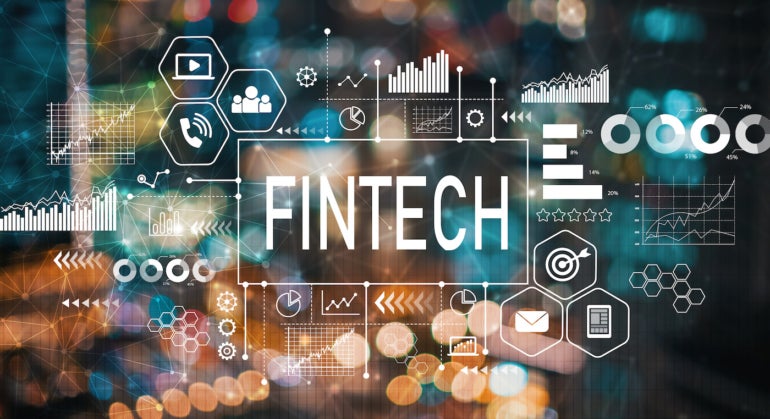
The fintech digital transformation phase is over: What follows now is acceleration and innovation. Global economic uncertainties, intense market competition, increased data security threats and consumer demands will shape 2023 fintech strategies across the board.
The fintech sector is adopting technologies for different purposes. While some trends, like the use of data-driven platforms, have gained their rightful place in the trend rankings due to their ability to increase performance, others like risk management technologies are in place to mitigate threats, reduce costs and face increasing data security complexities.
On the other hand, AI-driven hyper-personalized customer experiences give companies a fighting chance in a market that has become increasingly saturated with competition, while leading global institutions are beginning to deploy quantum computing to get a head start on the future of finance. Here are the 2023 fintech trends; let’s dive into them.
Jump to:
- Data-driven platforms and automation
- AI-driven hyper-personalized customer experiences
- Payment diversity: Embedded finance, blockchain and crypto
- Risk management tech: Compliance, privacy, cybersecurity
- Quantum computing: The rise of the new fintech era
Data-driven platforms and automation
Accenture ranks “data as a product” as a top trend for 2023, but leveraging data in all business aspects — ensuring data quality, security and “fit for business” standards to drive internal and external decisions — is a trend that applies to the entire fintech market, not just banking.
Faced with increased workloads, the challenges of attracting and retaining fintech talent and consumers who demand agile, modern and responsible data management, fintech turns to data edge-cloud platforms to do more with less.
Companies that master technologies that automate data processes throughout the lifecycle will separate from the pack. From how data is generated and checked for quality, security and compliance to how it is presented in business intelligence dashboards, automation tools can speed processes, reduce human errors and increase visibility, enhancing production and operations.
In turn, AI-powered data cloud platforms will continue to enable hyper-personalized brand and customer experiences.
SEE: Hiring Kit: Cloud Engineer (TechRepublic Premium)
AI-driven hyper-personalized customer experiences
To attract new customers, boost loyalty programs and increase revenues, fintech leaders are using AI hyper-personalized customer experiences. Using data and technology tools like machine learning and AI, companies seek to understand and know their customers. The more a fintech company is intimate with the behaviors and desires of its customers, the better it can serve them.
ML models can be optimized to predict purchase desires using first-party data obtained with user consent through purchase history and other customer information. This data, stored in companies’ data marts, can be organized as consumer signal-based groups.
By creating signal groups — for example, “users interested in low-risk investments” — fintech companies can hyper-personalize offerings, create new products and services, and better serve the customer with what they want, when they want it.
Enhanced hyper-personalized customer experiences are how companies can compete in a fintech global market that is becoming increasingly more crowded, with hundreds of thousands of startups seeking success simultaneously and traditional large institutions modernizing to level up.
SEE: Artificial Intelligence Ethics Policy (TechRepublic Premium)
Payment diversity: Embedded finance, blockchain and crypto
Dominating technology payment trends for 2023 are deployed based on a simple premise; the wider the options, the broader the net. In mid-2022, The Ascent revealed that 50% of Americans had used the new Buy Now, Pay Later payment method. Millennials and Gen Z lead in the adoption of new payment technologies as they grow in popularity, and BNPL is just one of many trending payment technologies.
Fintech embraces payment tech diversity, building “Super Apps” that offer clients conventional bank accounts, blockchain and crypto services, e-wallets, credit and debit cards, BNPL services, capital market and stock exchange, instant international blockchain transfers, AI-driven rapid insurance services and more.
2023 will continue to see fintech Super Apps becoming the norm, with additional services, products and payment options included, such as NFTs, automatic checkouts, or biometric instant payments and transactions.
Risk management tech: Compliance, privacy and cybersecurity
The Flashpoint “Year In Review: 2022 Financial Threat Landscape” report reveals that the financial sector had the second-highest number of breaches compared to other industries. Due to the wealth of valuable data the sector homes, cybercriminals target fintech companies and their users. Cybersecurity is but one component of risk management affecting the sector.
In 2023, risk management will make or break financial services organizations. Technologies that mitigate, automate, and prevent threats and risks are sought out intensely by companies to avoid cyberattacks, data leaks, legal suits, negative consumer perception, loss of customers and business partners, and million-dollar fines.
Integral risk management frameworks that tackle cybersecurity, compliance and governance as well as automate the complex data processes involved while providing intelligent analytics with AI tools, are the one-stop solution. Some niche trends widely adopted for risk management include biometrics and password managers to reduce fraud.
On the other hand, as AI apps are widely deployed to evaluate credit risks and provide “instant” digital insurance policies, transparency becomes a must. AI analytics performance must be verified to ensure they are unbiased and non-discriminatory and are in compliance with standards and regulations.
From meeting consumers’ demand for data privacy and data security to creating trust and robust business operations, risk management can increase performance in 2023, while reducing costs, avoiding threats and preventing risks before they happen.
Quantum computing: The rise of the new fintech era
As recently reported by TechRepublic, leading global financial organizations and institutions like Crédit Agricole are successfully experimenting with quantum computing. The technology, which leverages the laws of quantum mechanics to go beyond classic computer computational powers, is rapidly moving from experimental phases to testing and deployment.
The speed, accuracy, reliability and security of quantum computing processing capabilities are what attract a sector like fintech, where better calculations translate into more profits and less risks.
IBM Quantum, Microsoft Azure Quantum, Google Quantum AI and other cloud vendors are driving the implementation of the new tech in finance. By offering fintech customers access to cloud quantum computing resources, cloud vendors have eliminated the highly technical requirements and expensive upfront costs that building quantum computers have.
Quantum computing will disrupt all aspects of finance, including portfolio creation, profit margin analysis, asset price fluctuation estimations, stock markets and derivatives trading and credit risk assessment. It will also enable better factor predictions as ESG and new regulations set higher standards and increase calculation challenges.
The fintech sector kickstarts 2023 with a turbulent economic landscape inherited from a disruptive 2022. The factors that trigger global tectonic shifts — the war in Ukraine, inflation, job market and supply chain disruptions, environmental pressures, regional socio-political tensions and more — will continue to play out throughout the year ahead. However, as fintech opens up the world for business, technology will continue to play a leading fundamental role.
While most of the 2023 fintech tech is not new to the game, what makes this year different is the maturity level that companies have acquired. Markets may shift and turn, consumer trends may pivot and regulations and standards may increase, but leading fintech organizations will continue to use technology to find solutions and new opportunities in the crises.
If other trends are of interest this year, check out 5 key 5G trends to watch and Gartner’s analysis of IT infrastructure trends.


